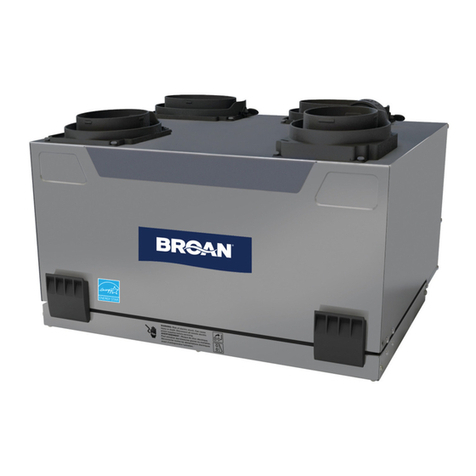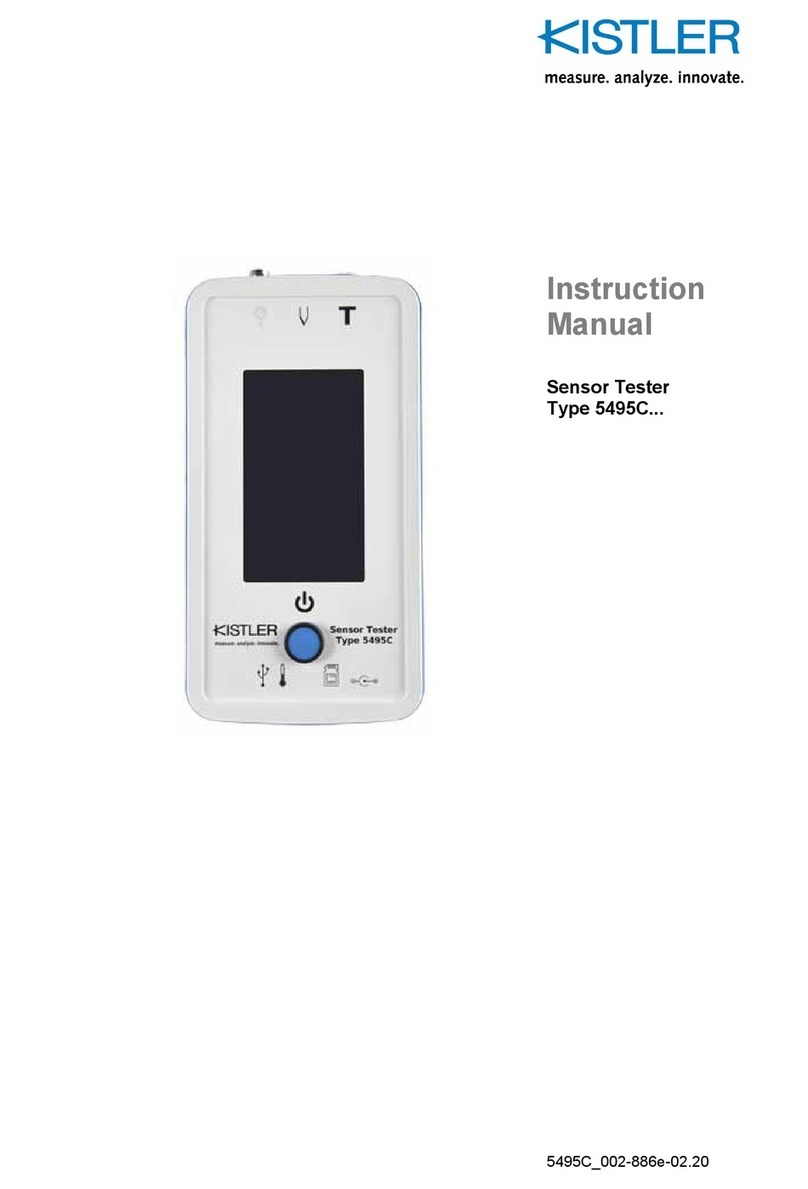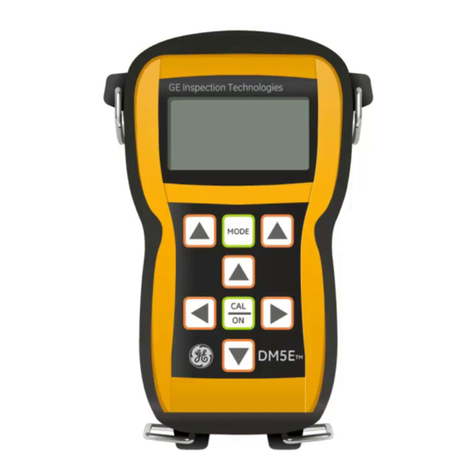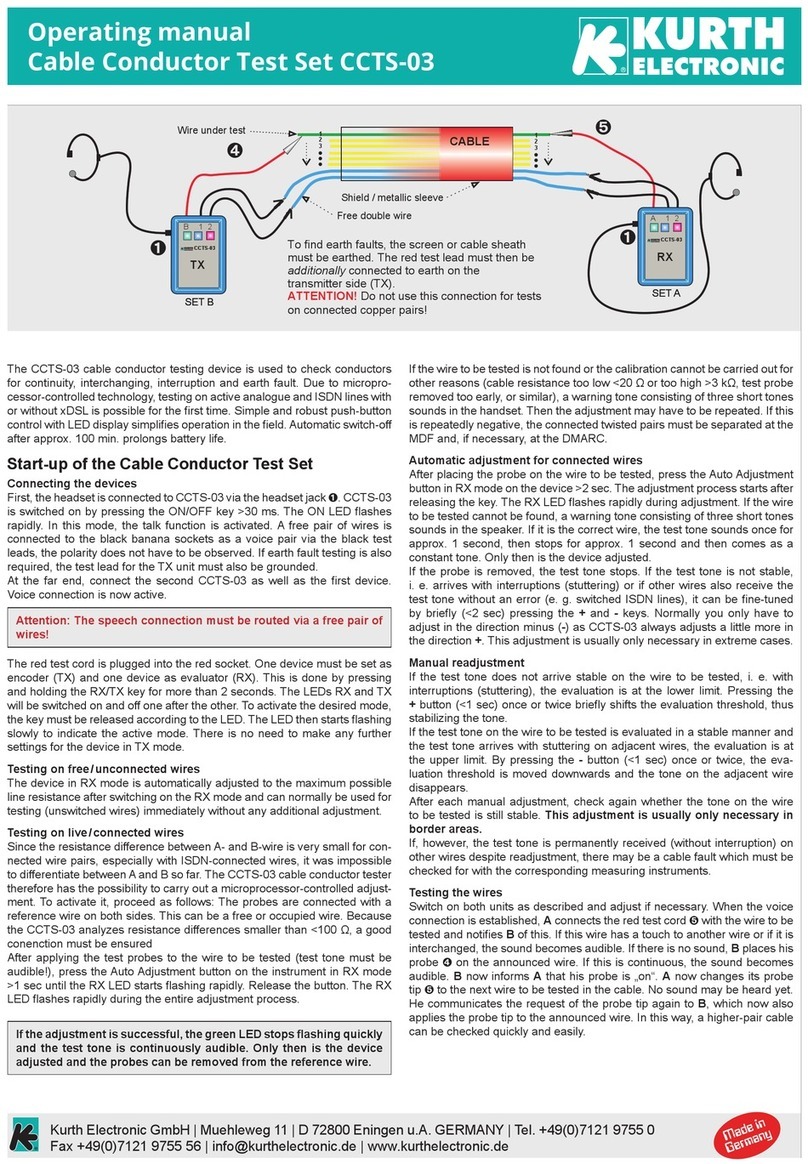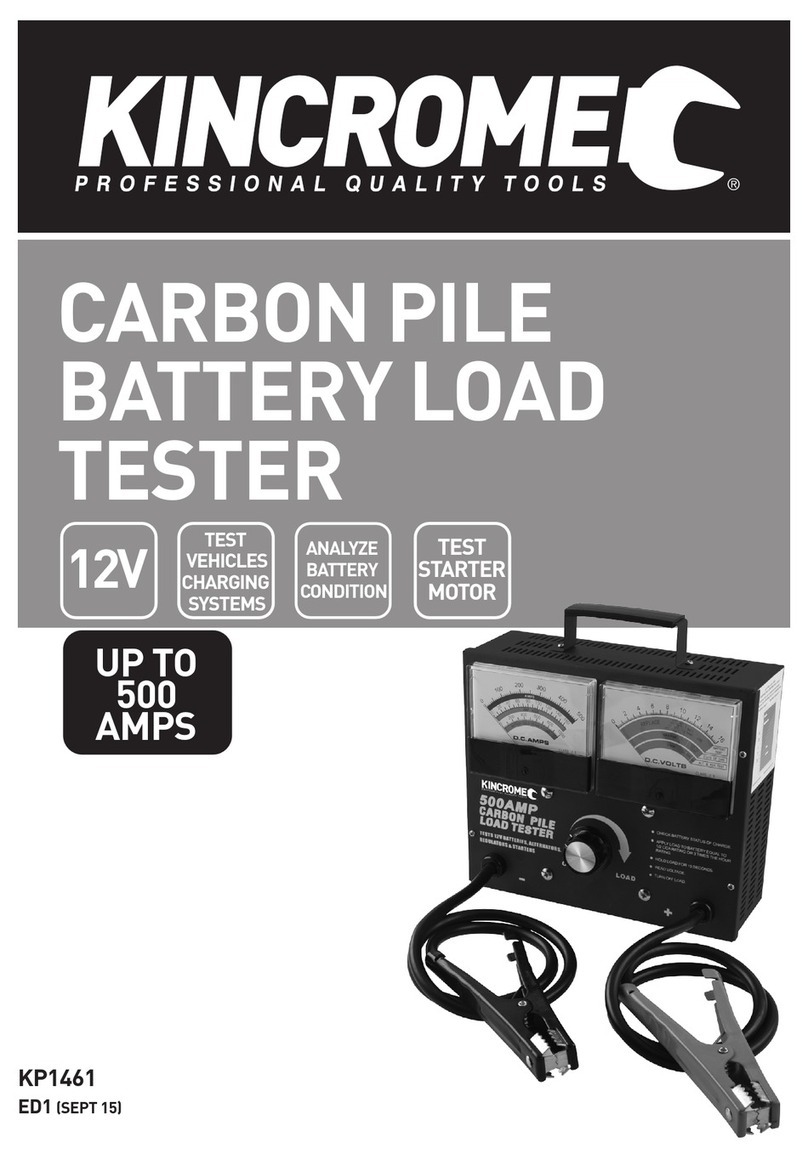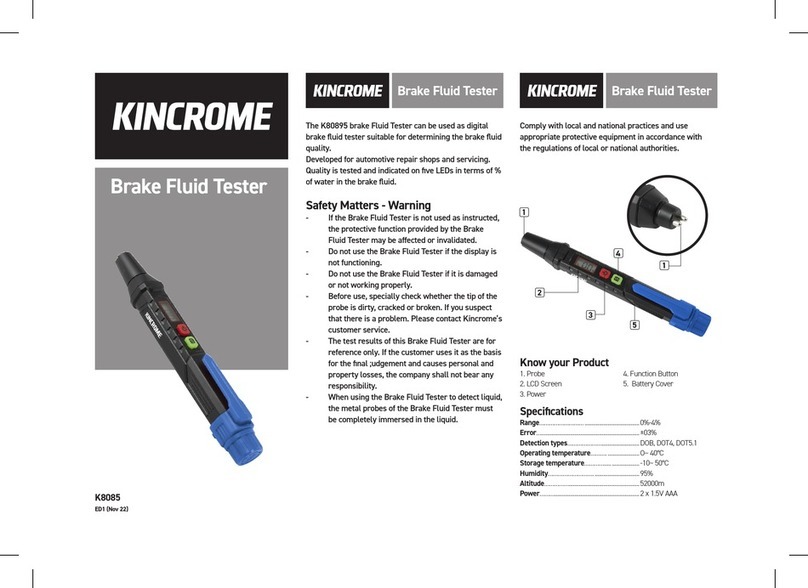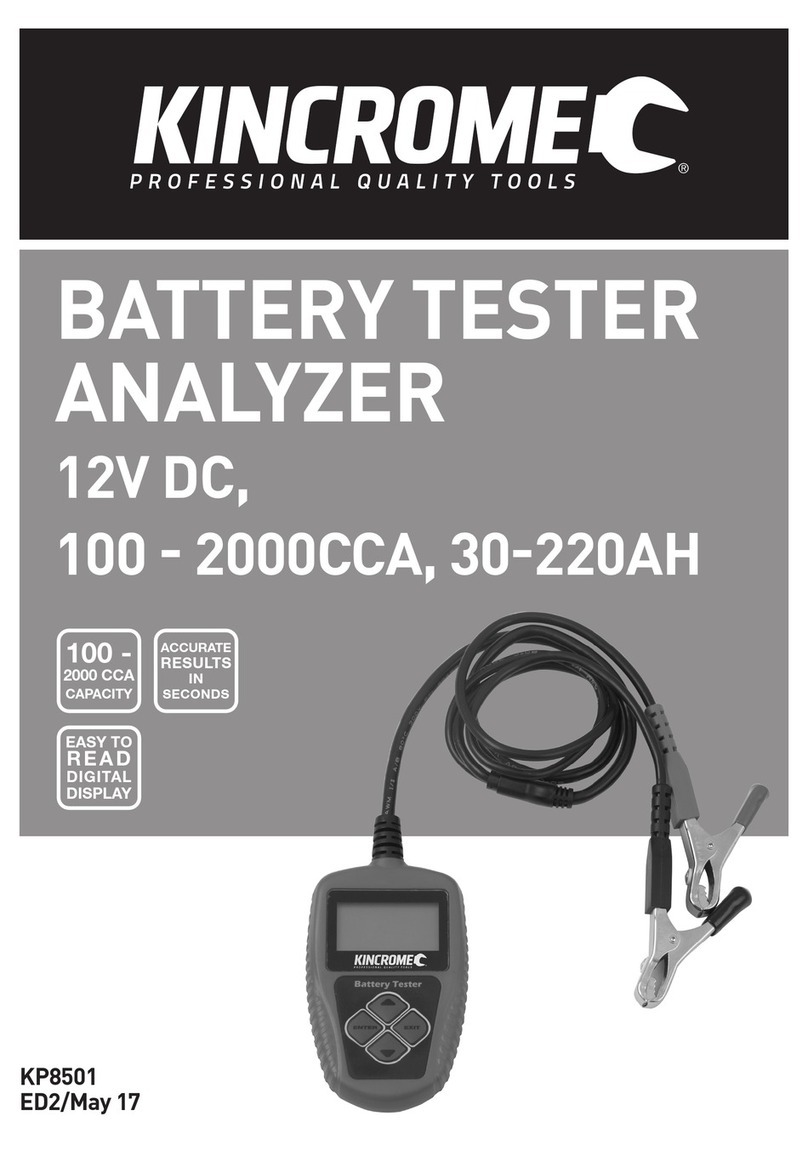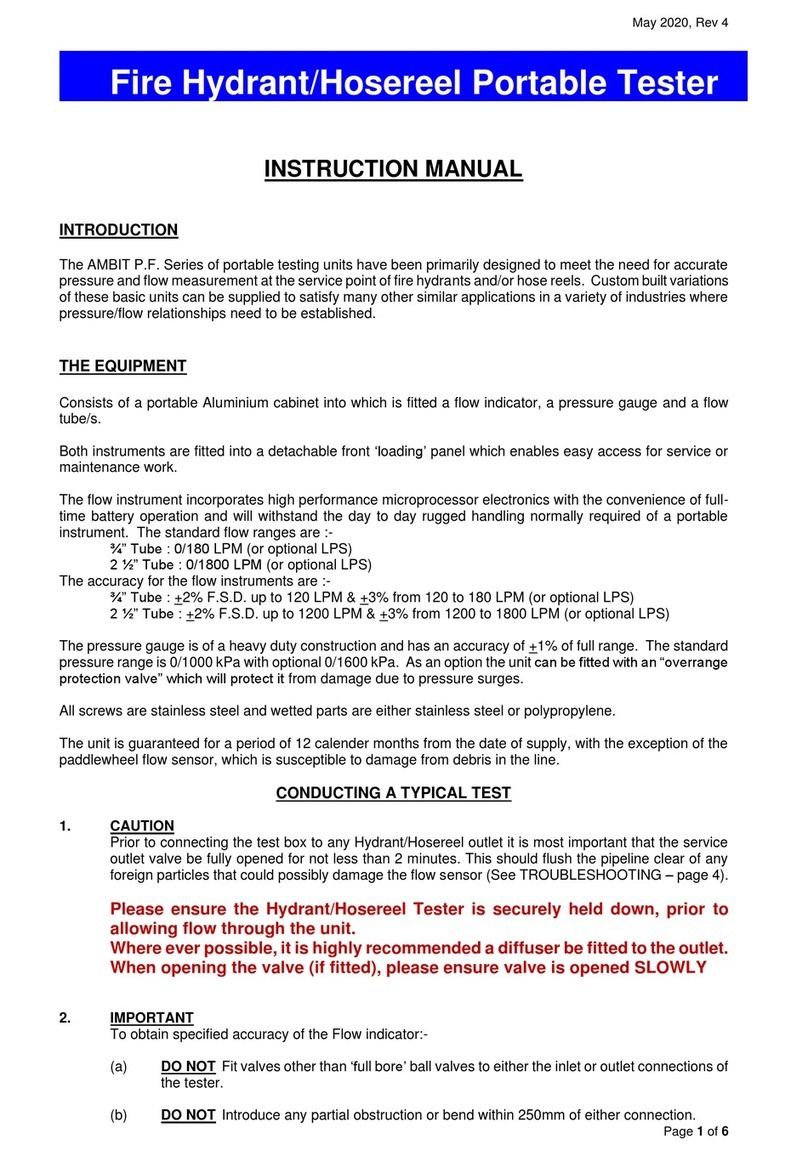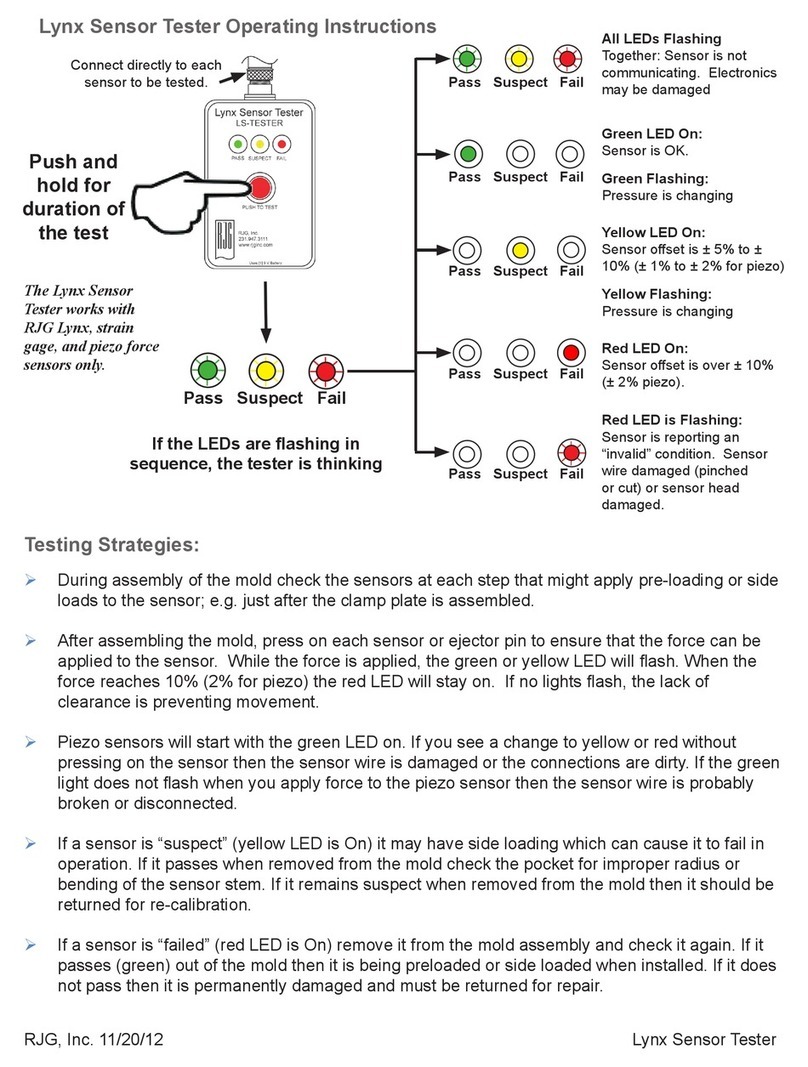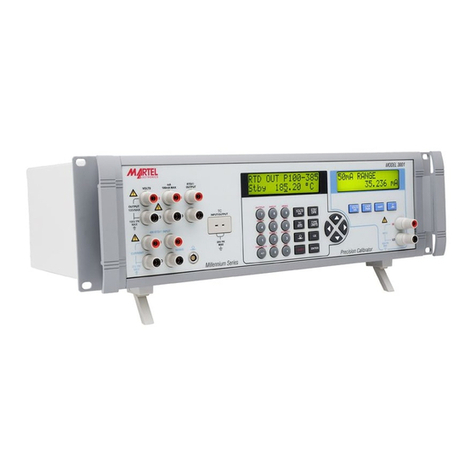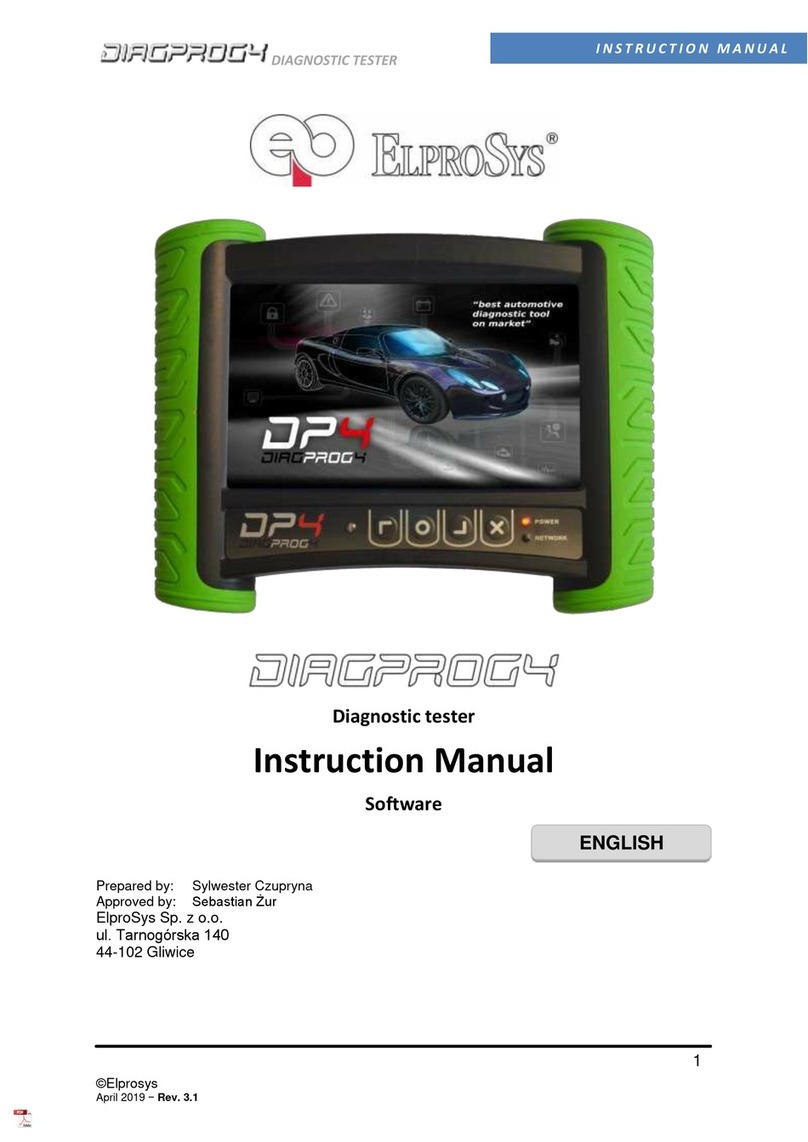
3
BATTERY LOAD TESTER <100A
General Safety Warnings
Save all warnings and instructions for future reference.
WARNING! Read all safety warnings and all instructions. Failure to follow the warnings and instructions may
result in electric shock, fire and/or serious injury.
1) General Safety Warnings
a) Save all warnings and instructions for future reference.
b) The warnings, cautions and instructions discussed in this instruction manual cannot cover all possible
conditions and situations that may occur.
c) Common sense and caution are factors that cannot be built into this product, but must be supplied by the operator.
2) Work Area
a) Operate in a safe work environment. Keep your work area clean and well lit.
b) Keep anyone not wearing the appropriate safety equipment away from the work area.
Note: Minimize distractions in the work environment.
c) Distractions can cause you to lose control of the tool.
d) When connecting the battery load tester cables to the battery, avoid creating sparks; especially when the battery is
being charged. Explosive gases are created during charging. Sparking could also damage the vehicle electrical system.
e) Always lock up tools and keep them out of the reach of children
3) Personal Safety
a) Wear ANSI-approved safety goggles during set up and use of the Battery Tester.
b) Test in a well ventilated area. Explosive gases may be produced during testing. Do not smoke, cause sparks, or strike
matches near the battery when testing.
c) Protective, electrically non-conductive clothes and non-skid footwear are recommended when working. Wear steel-toed
boots to prevent injury from falling objects.
d) Refer to the user manual of the battery being tested for testing instructions and precautions prior to using the battery
load tester.
e) Do not connect in reverse polarity.
f) Use this product in accordance with these instructions, taking into account the working conditions and the work to be
performed. Use of this product for operations different from those intended could result in a hazardous situation.
g) This product is not a toy. Keep it out of reach of children.
h) Maintain labels and nameplates on the unit. These carry important safety information. If unreadable or missing, contact
Kincrome Tools for a replacement.
i) People with pacemakers should consult their physician(s) before use. Electromagnetic fields in close proximity to heart
pacemaker could cause pacemaker interference or pacemaker failure. Caution is necessary when near coil, spark plug
cables, or distributor of running engine. Engine should be off during distributor adjustment.
j) Undercharged lead-acid batteries will freeze during cold weather. Do not test or charge a frozen battery.
k) Do not smoke or have open flames near the battery.
l) Never remove battery load tester clamps while testing.
4) Risk of Electric Shock
a) Never touch the clamps and the terminals with wet hands.
b) Do not pull the clamps from the terminals by pulling on the clamp cables.
c) Check the power cord and mains plug for damage before every use.
d) Do not touch the cooling vents on the battery load tester during or immediately after testing the battery. They become
very hot.
f) When placing the battery load tester in the vehicle’s engine compartment, take special care that the metal housing of
the battery load tester does not come in contact with either terminal of the battery or other electrical connections.
g) Be certain of the test battery polarity before connecting the tester battery clamps (1 & 3). The RED (+) positive battery
clamp (3) goes to the positive terminal of the battery. The BLACK (-) negative battery clamp (1) goes to the negative
terminal of the battery. Reversing the battery load tester battery clamps (1 & 3) on the battery will damage the Battery
Load Tester.
h) Do not drop the Battery Tester as it may affect proper operation.
i) Do not smoke or have open flames near the battery.

